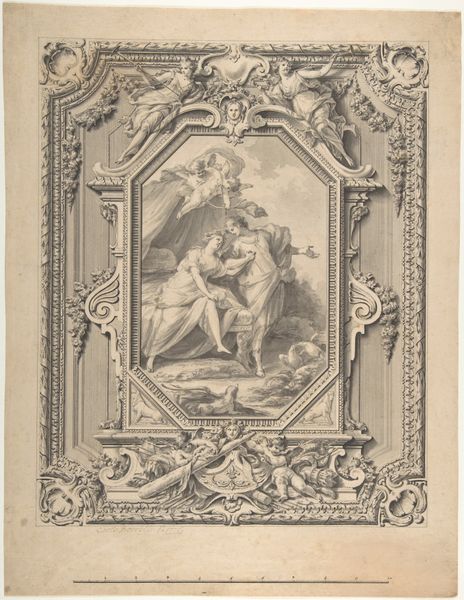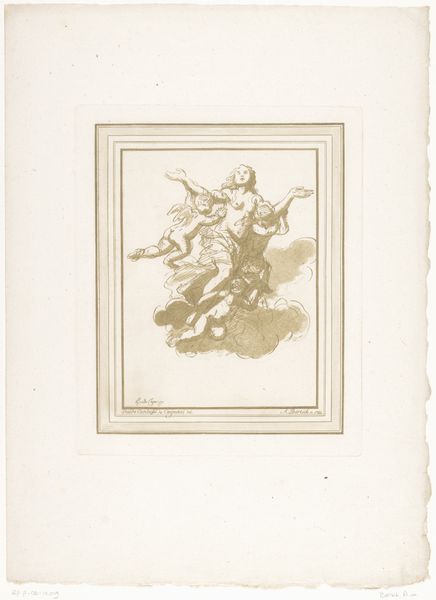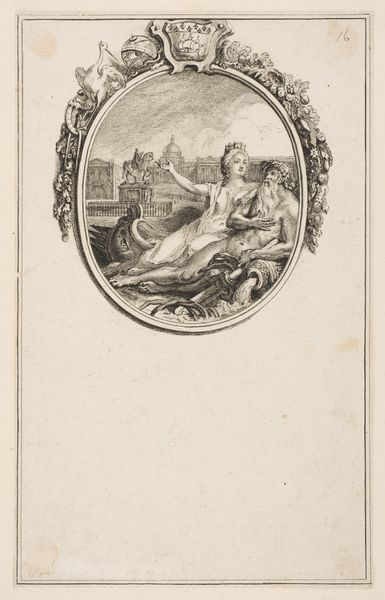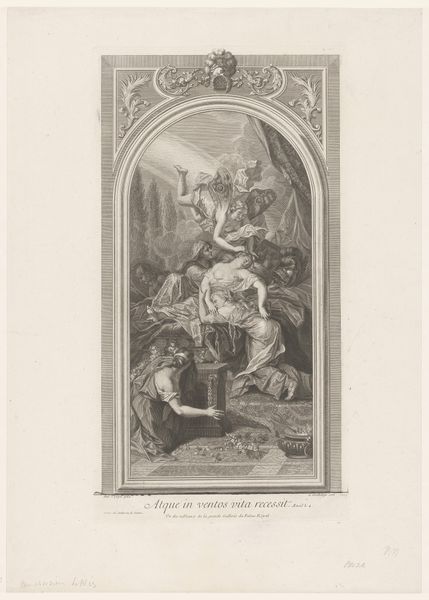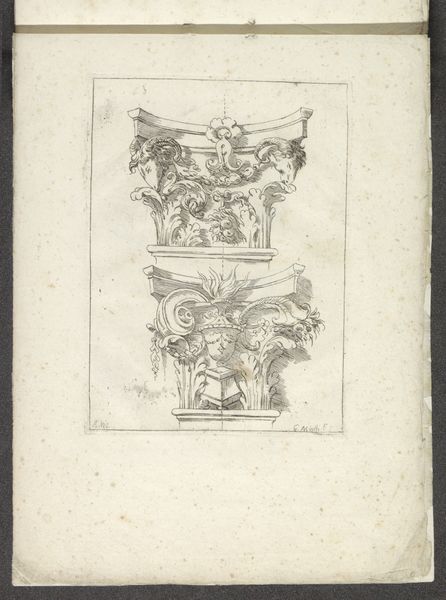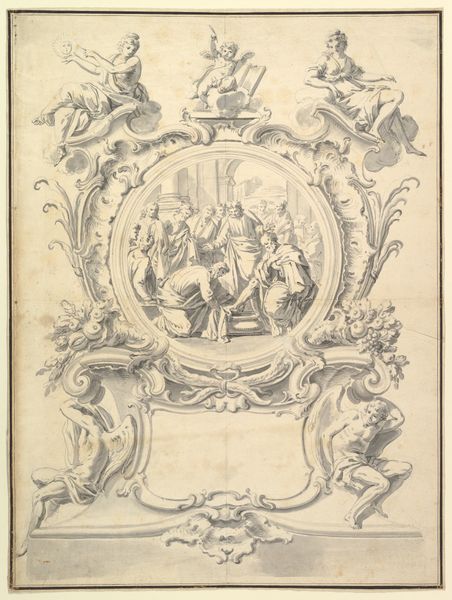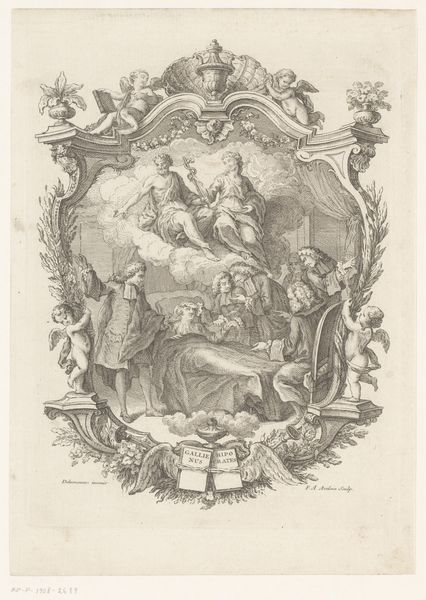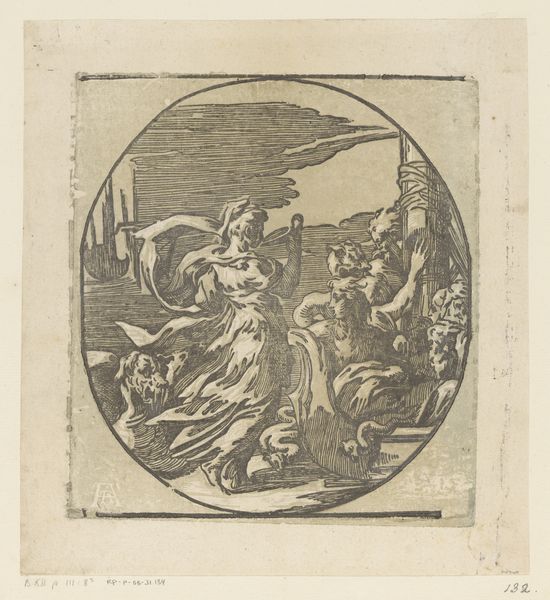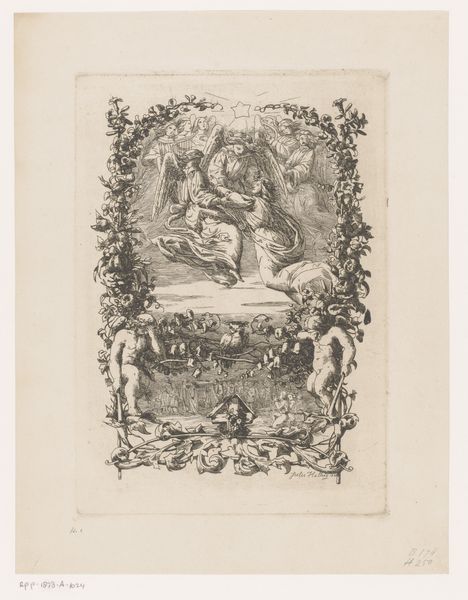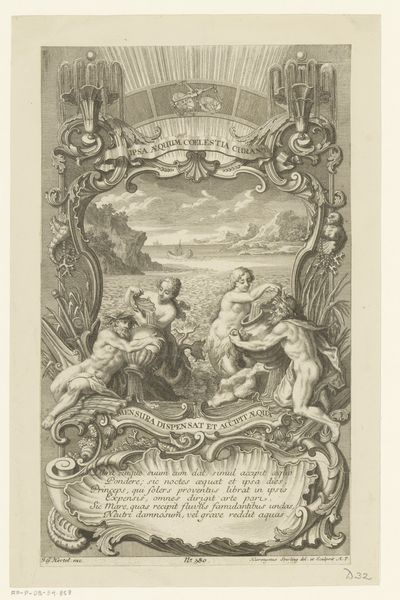
Reverse Copy of Allegory of Louis XVI on the Occasion of his Accession to the Throne of France in 1774 1775 - 1800
0:00
0:00
Dimensions: Sheet: 12 × 8 3/4 in. (30.5 × 22.3 cm) Plate: 11 7/16 × 8 3/4 in. (29.1 × 22.3 cm)
Copyright: Public Domain
Augustin de Saint-Aubin created this print, an allegory of Louis XVI’s accession to the throne, in France in 1774. It’s an image steeped in the visual language of monarchy. Here, Louis is depicted not just as a man, but as a divinely appointed ruler. Note the cherubic figures hovering above, one bearing a crown. The figures around Louis appear to represent France, kneeling in gratitude and loyalty. This kind of imagery wasn’t just about conveying information; it was about shaping public perception and reinforcing the authority of the crown. The print itself, as a medium, played a crucial role in disseminating these messages widely. It’s interesting to consider how such carefully constructed images might have been received by a public increasingly exposed to Enlightenment ideals and questioning traditional hierarchies. To truly understand this print, we delve into the social and political context of 18th-century France. Scholarly resources, such as journals and historical archives, provide insight into the complex relationship between the monarchy, the public, and the burgeoning world of visual media.
Comments
No comments
Be the first to comment and join the conversation on the ultimate creative platform.
